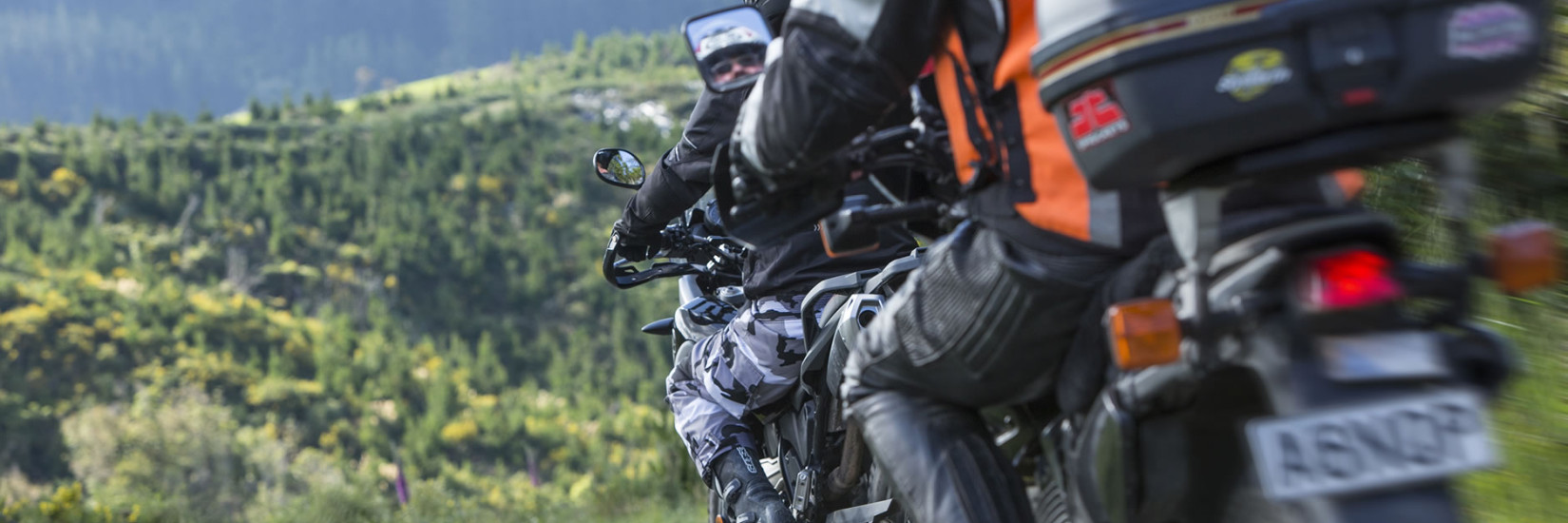Different road conditions
Differing conditions, from weather and light to other road users and surface changes, present perhaps the biggest challenge to road riders. Mastering them is the mark of an expert.
Wet roads
On dry roads, you'll usually run out of ground clearance before you run out of cornering grip. And when braking, with the right technique, you can often have the front suspension compressed to the bumpstops, and the rear tyre off the ground, before the front starts to skid. But not in the wet.
On wet road surfaces, cornering and braking can both overwhelm the grip on offer. Also, while different types of road surface, road markings and drains offer enough grip in the dry, in the wet it’s a different story. They can be as slippery as ice.
The biggest issue on wet roads is widely varying levels of grip. The amount of water on the road, and different surfaces and road features, combine in ways that are difficult to judge.
Slightly damp asphalt in perfect condition offers plenty of grip, especially if your tyres are warm. With water running across it you can easily aquaplane. A shiny piece of overbanding covered in light drizzle is like ice. So is a wet metal drain or expansion joint.
New chipseal with sharp stones gives a good grip. Another piece can look the same as you approach it but if the stones are rounded the grip is less. Road markings that didn’t matter in the dry can now cause a skid or wheelspin.
The average road surface is a patchwork, so you can’t be sure that the grip you had fifty metres before is available now. That’s why, on wet roads, always ride with plenty of room for error. And, wherever possible, change your line to avoid areas that are likely to be slippery.
Slightly damp asphalt in perfect condition offers plenty of grip, especially if your tyres are warm. With water running across it you can easily aquaplane. A shiny piece of overbanding covered in light drizzle is like ice.
Dry roads
The roads are dry, the sun is out and your tyres are warm. It might seem like an open invitation to scrape the footpegs, but there are dangers to watch out for. Oil, diesel, melting tar, loose grit and animal waste can all catch you out. Again, reposition or change lines to avoid them and apply the right technique if you do slide.
Slippery surfaces
It’s best to avoid riding in hazardous conditions if you can. But if you have to face them, do so with extreme caution.
In snow, frost and ice
You can usually find some grip near the verge where grit builds up. If you do find yourself skidding, look ahead to where you want to go and try to maintain balance in the hope you'll come to a surface offering more adhesion. Don't brake, although pulling in the clutch and freewheeling may help.
Oil and diesel
Can show up as wet patches on otherwise dry roads, or rainbow coloured patches on wet roads. Sometimes, though, your first indication of diesel will be the smell.
Other slippery things to look for (but not fixate on!) include:
- Painted road markings in the wet.
- Melted tar.
- Manholes.
- Water puddles.
- Smooth (glossy) concrete.
- Cattle grids.
- Areas covered with moss, animal droppings or mud.
- Loose grit.
In all cases, try to change line and ride around the hazard if you can. If you do have to ride over anything slippery do so as slowly as practical, upright and heading straight. Do not brake or accelerate, and keep looking ahead where you want to go.
Gravel roads and road works
As always, don’t become fixated by the hazard - keep your head up and look where you want to go. When riding on gravel:
- Ride where there are wheel tracks (these offer a firmer surface).
- Avoid braking when you're banked over and slow early for corners.
- Keep a generous following distance to avoid flying stones and dust.
- Use more modest banking angles.
- In deep gravel, use the rear brake more than the front.
- Ride in a lower gear and move your weight to the rear.
- If it gets really deep, stand on the footrests and reduce the weight on the front.
- As a last resort, ride at walking pace or less with both feet down.
Negotiating road works is pretty much the same. If you pass over new chip-seal, check that stones covered in bitumen haven’t jammed your brakes, gear change linkage or final drive system.




